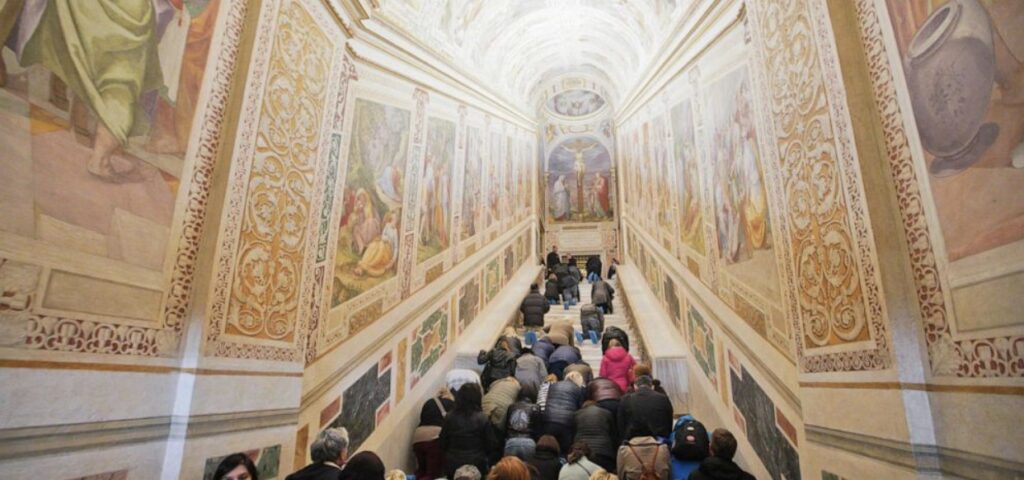
It has been 300 hundred years since Roman Catholic pilgrims have crawled upon their knees to ascend the marble “Holy Steps” as penance for sin. The 28 marble steps are thought to have been originally brought to Rome during the fourth century by St. Helena, mother of Emperor Constantine when Roman Catholicism became the official religion of the Roman Empire.
The marble steps purported to be those of Pontius Pilate’s palace in Jerusalem that Jesus Christ ascended before his trial that lead to his crucifixion were unveiled on Thursday.
Prior to the unveiling of the restored marble stairs, they had not been been seen by the Catholic faithful since 1723 as they had been encased in wood for protection.
It was during the Middle Ages that Catholic pilgrims began making pilgrimage to Rome to climb the “Holy Steps” on their knees as a penitential sacrifice and in remembrance of the passion of Christ.
During the restoration process, the Vatican restorers found that three small bronze crosses had been embedded in the steps, worn areas believed to be markings of the pilgrims toes as they made their way from one step to the next, and supposedly the blood stains of Christ as he climbed the marble stairs prior to his trial before Pontius Pilate.
The freshly restored marble steps, housed in a part of the historic papal building known as the Lateran Palace, were blessed by Cardinal De Donatis, vicar general of Rome. After the Cardinal’s blessing a multitude of people that had gathered for the unveiling made their way to climb the stairs first stopping to kneel and kiss the first marble step.
The “Holy Stairs“ will be made available to pilgrims through Pentecost.











